Customer Journey Map: What It Is, What It’s For, How to Create One, and Examples
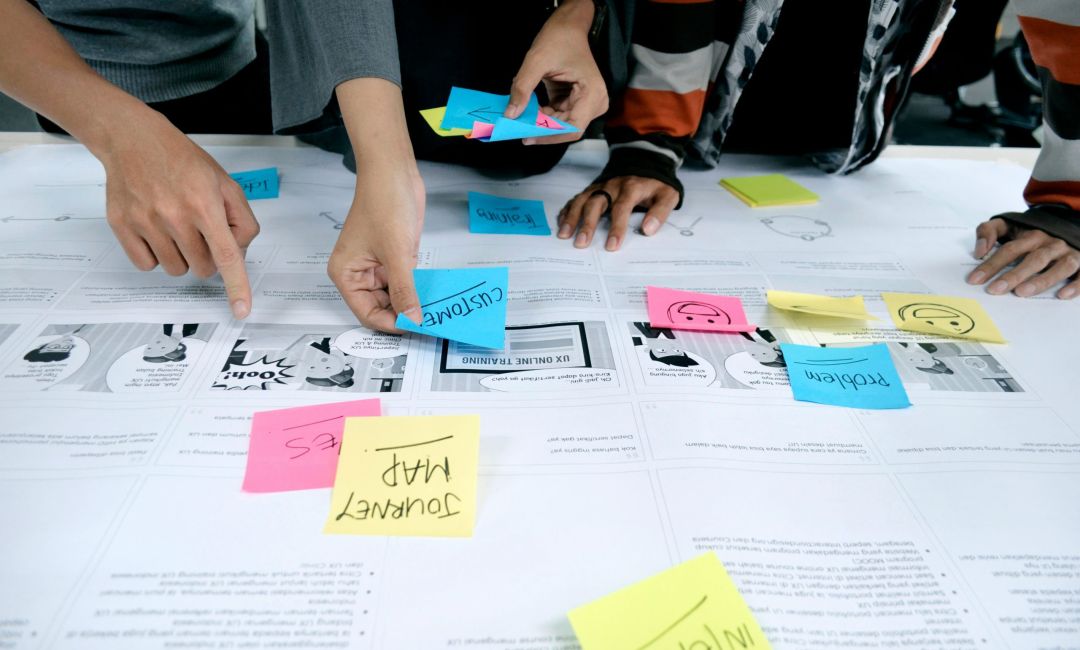
Have you ever wondered what goes through your customers’ minds from the moment they discover your brand until they recommend you to others? The customer journey map is the tool that allows you to see the complete path your customer takes, identify where you’re losing opportunities, and discover how to improve each interaction to convert more and build better loyalty.
At Magnetic, we’ve proven time and again how brands that truly understand their customers’ journey multiply their results. It’s not just about intuition or assumptions: it’s about mapping, analyzing, and optimizing every touchpoint.
And that’s exactly what we’re going to teach you today.
What Is a Customer Journey Map?
A customer journey map is a visual representation that documents all the experiences, emotions, thoughts, and touchpoints that a person has with your brand throughout their purchase process and beyond.
Think of it as an illustrated narrative that shows step by step how your customer interacts with you, what they feel at each moment, and where they encounter obstacles or satisfaction.
This map is not a simple flowchart.
It’s a strategic tool that combines real data, qualitative research, and deep empathy with your customers, and includes everything from the first moment someone hears about you (perhaps on social media, Google, or through a recommendation) to post-purchase interactions that determine whether they’ll return or recommend you.
The most valuable aspect of the customer journey map is that it forces you to put yourself in your customer’s shoes.
At Magnetic, we work with brands across all sectors creating these personalized maps, because we know that each business has its own unique journey. There’s no magic template that works for everyone: your customer journey must reflect the specific reality of your customers and your market.
What Is a Customer Journey Map For and What Are Its Benefits?
Creating a customer journey map is building a work tool that radically transforms how you understand and manage your relationship with customers. Let’s look at the concrete benefits it provides.
- Detect friction points and missed opportunities.
When you map the entire journey, the moments where customers get frustrated, confused, or abandon become clearly visible.
It could be a form that’s too long, a lack of information at the critical moment, or simply slow response times. Identifying these friction points allows you to act specifically on them, instead of making blind changes hoping to improve.
2. Align teams and departments.
One of the most common problems in companies is that marketing, sales, customer service, and product work in separate silos. The customer journey map breaks down these barriers because it shows how each department impacts the overall experience.
At Magnetic, we’ve seen how this alignment dramatically improves coordination and results.
3. Personalize communication at each stage.
Some customers have just discovered you, others are comparing options, and there are those who have already purchased but need help.
The map allows you to adapt your messages, content, and offers according to the specific stage each person is in, multiplying the relevance and effectiveness of your actions.
4. Optimize marketing investment.
When you understand exactly how and where your customers interact with you, you can invest your resources in the channels and moments that truly matter. You stop wasting budget on tactics that sound good but don’t connect with your real audience.
5. Improve conversion rate and customer value.
By eliminating friction and offering smoother and more satisfying experiences, you naturally increase both initial conversions and repeat purchases.
6. Base decisions on real data.
A well-made customer journey map is built on real research: customer interviews, behavior analysis, surveys, usage data. This means your strategic decisions stop being based on opinions or hierarchies and are supported by solid evidence about what really works.
Customer Journey Stages and How to Represent Them on the Map
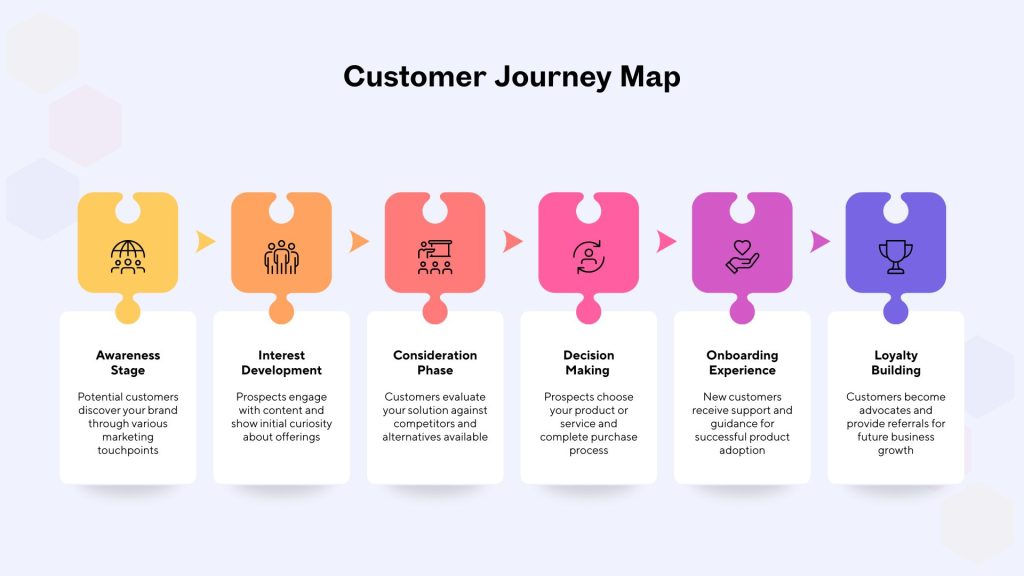
The customer journey is neither linear nor identical for everyone, but it generally goes through six fundamental stages. Understanding each one and knowing how to represent them on your map is essential to creating a truly useful tool.
1.Awareness
This is the initial stage where a person discovers they have a need, problem, or desire, and begins to search for information. Here they don’t necessarily know you yet, or have just heard your name for the first time.
To capture this first phase in your customer map, you must answer questions like:
- What exactly are they looking for?
- What words do they use?
- Where do they search?
- What content of yours do they find first?
- Is it clear to them that you can help them?
At this phase, your goal is not to sell but to be found and demonstrate that you understand their problem.
From our experience at Magnetic, many brands fail here because they create content centered on themselves (“we’re the best,” “our services”) instead of answering the real questions their audience asks. Educational, useful, and empathetic content is what works in the awareness stage.
2. Consideration
Once the person is aware of their need and possible solutions, they enter the consideration phase.
Now they are actively evaluating different options, comparing providers, reading reviews, and diving deeper into features, prices, and benefits. They already know you, but they also know your competition.
Here, ask yourself things like:
- What specific information do they need to move forward?
- What objections do they have?
- Who are they comparing you with?
- What do they value most: price, quality, speed, service?
- Do they easily find the information they’re looking for on your website?
- Do your contents answer their questions or force them to search elsewhere?
3. Decision
The decision moment is when the potential customer has already narrowed down their options and is about to choose, they’re in direct contact with you, requesting a proposal, asking for a quote, or literally have their card in hand.
Here any friction or doubt can cause all the previous work to be lost.
To include it in the map, ask yourself things like:
- How long does your response process take?
- Is it easy and clear to contract or purchase?
- Are there unnecessary steps that complicate the transaction?
- What last-minute fears or doubts appear?
- Do you offer the guarantees, facilities, or assurances they need to take the step?
Many companies lose customers here due to avoidable things: endless forms, lack of payment options, confusing processes, slow responses, or lack of perceived security.
4. Purchase
The purchase is the moment of the actual transaction. The customer has made the decision and is now completing the process: signing the contract, making the payment, configuring the service, or receiving the product.
Although it may seem you’ve already won, this stage largely defines initial satisfaction and conditions everything that comes after.
Capture in your customer journey map every step of the transactional process: from the click on “buy” to the final confirmation. Include confirmation emails, processing times, communication about order status, usage instructions, service welcome, initial onboarding.
Also document what they feel: relief, excitement, anxiety about whether they made the right choice?
5. Retention / Loyalty
Once the purchase is completed, a stage begins that many brands neglect: retention and loyalty building. The customer already has your product or service, and now the usage experience, the support received, and ongoing communication determine whether they’ll return, increase their investment with you, or if it was simply a one-time transaction.
In the map, you’ll document all post-purchase interactions:
- Product or service usage experience
- Contacts with customer service
- Educational content they receive, loyalty programs, follow-up emails, renewals, upselling and cross-selling
This is probably the most profitable stage of the customer journey. Retaining and growing existing customers costs much less than acquiring new ones, and loyal customers have a significantly higher lifetime value.
5. Advocacy
The last stage, but no less important, is when satisfied customers become active promoters of your brand.
They recommend your services, leave positive reviews, share content on social media, participate in referral programs, and defend your brand when someone questions it. This stage represents the maximum level of success in the customer journey.
What should you map at this stage? All the ways customers can promote you: reviews on Google or specialized platforms, mentions on social media, referral programs, testimonials, success stories, user-generated content.
Also document what motivates your customers to recommend you and what facilities or incentives you offer for them to do so.
How to Create a Customer Journey Map
Creating an effective customer journey map requires method, research, and brutal honesty about your current reality.
It’s not about drawing the ideal journey you’d like your customers to have, but about mapping the real journey they’re experiencing now, with all its virtues and flaws.
Here we explain the step-by-step process:
1. Define your buyer people with precision.
Before mapping the journey, you need to know who’s taking it. Identify your different types of customers: they can vary by industry, company size, role, needs, or behavior. Each persona can have a different journey, so it’s essential to segment correctly. Include demographic data, but especially behavioral and psychographic: motivations, fears, objections, preferred channels.
2. Research with real data, not assumptions.
You can’t create a customer journey from your desk imagining what customers do, you need data: interview current customers (especially recent ones), analyze call recordings, review support tickets, study website behavior with analytical tools, send surveys, talk to your sales and customer service team.
At Magnetic, we combine deep qualitative research with quantitative data analysis to obtain a complete and accurate picture.
3. Identify all touchpoints.
Exhaustively list every place, moment, or channel where your customers interact with you: from a Google search to a renewal email two years later. Include digital touchpoints (website, social media, emails, apps) and physical ones (store, events, phone calls).
Don’t forget the moments where they don’t interact directly with you, but do with information about you (third-party reviews, comparisons, media mentions).
4. Map actions, emotions, and pain points at each stage.
For each journey phase, document three dimensions: what the customer does (concrete actions), what they feel (emotions, from enthusiasm to frustration), and what problems or friction they encounter (pain points).
Use a simple emotional scale (positive, neutral, negative) to quickly visualize where the experience is high and where it drops.
5. Identify improvement opportunities.
With everything mapped, gaps and opportunities jump out. Ask yourself: where are we losing potential customers? What friction can we eliminate? What information is missing at critical moments? Where could we positively surprise? Prioritize opportunities according to their potential impact and ease of implementation.
6. Visualize the map clearly and actionably.
Format matters. Your customer journey map should be visual, easy to understand at a glance, and accessible to all teams. It can be an infographic, a flowchart, a timeline, or even a physical map on a wall. What’s important is that it clearly communicates the complete journey, key moments, and necessary actions. Use colors, icons, and visual elements that facilitate understanding.
If this process seems complex or you don’t have time to do it with the necessary depth, at Magnetic we specialize precisely in this: we research, map, and optimize the customer journey for brands that want real results, not decorative documents.
Customer Journey Map Templates and Examples
Seeing concrete examples helps to better understand how theory applies to reality, which is why we bring you some of the best Customer Journey map templates:
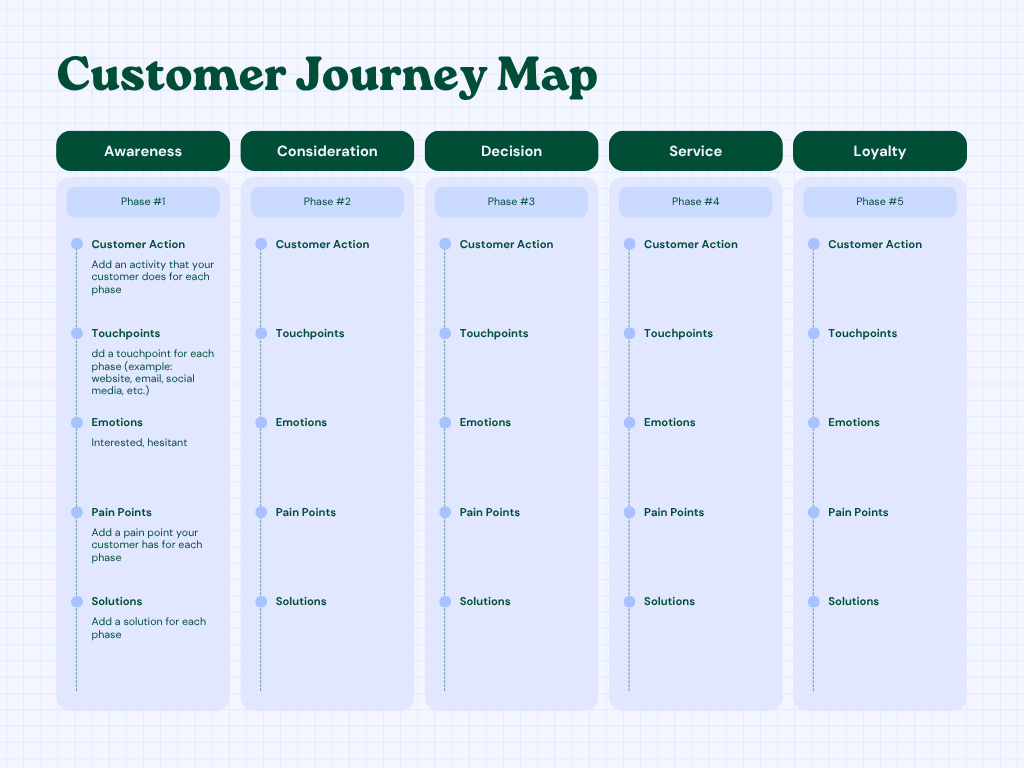
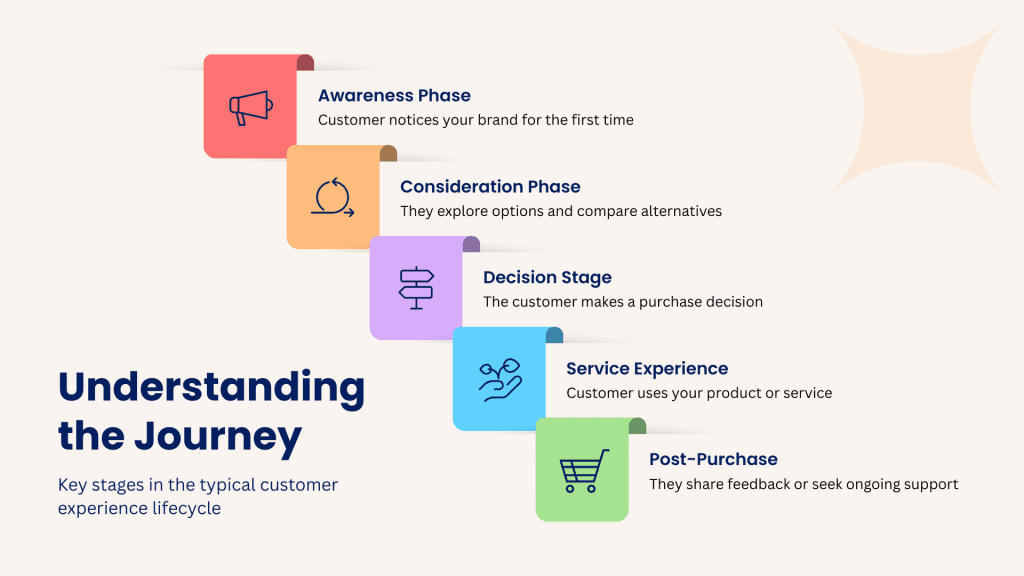
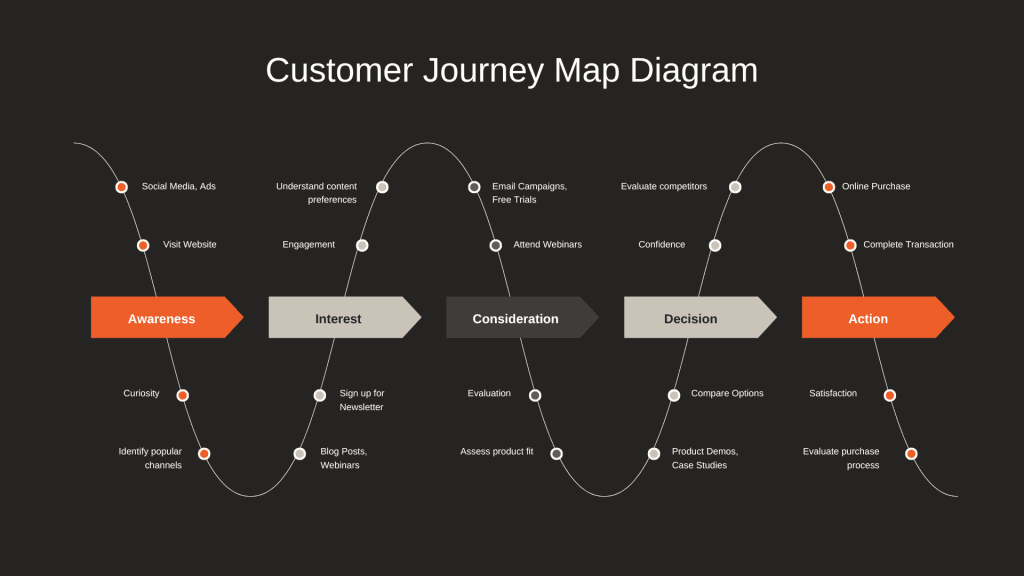
At Magnetic, we’ve spent years helping brands in Calella, Barcelona, and throughout Spain discover, map, and optimize their customer journey maps. We don’t work with generic templates or assumptions: we research, analyze real data, and create specific strategies that generate measurable results. If you want us to help you truly understand how your customers interact with you and how to improve every point of that journey, let’s talk. Because in marketing, as in any journey, knowing the path makes all the difference.
